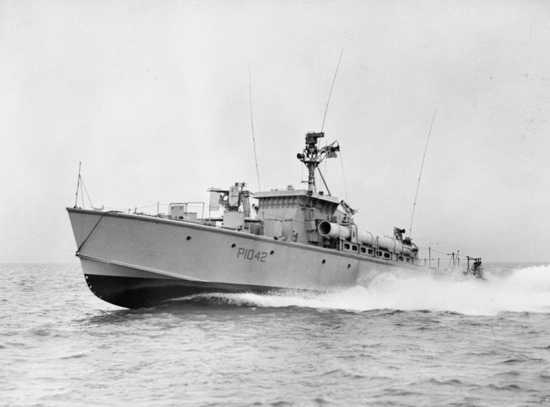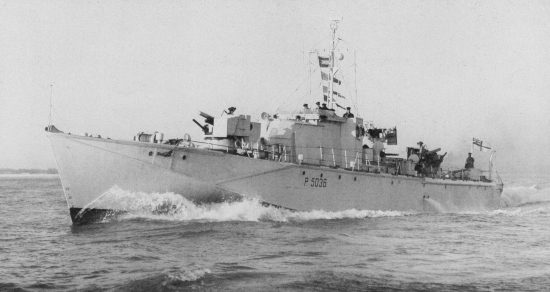Spitfires of the Sea does not, in any way, endorse smoking.
In 1925, tobacco firm J. A. Pattreiouex Ltd. of Cheetham Hill, Manchester, introduced a new brand of filterless cigarette to their small range. Following the precedent set by brands such as Navy Cut (introduced by John Player Player & Sons in the 19th century), they chose to associate and market the cigarette with a naval theme. When launched, it was named Senior Service, after the well established nickname of the Royal Navy (it being the oldest service within the British Armed Forces).1
The brand did well in Manchester over the next ten years but never really took off elsewhere until 1937, when the Gallaher Group acquired Pattreiouex’s parent company, E. Robinson & Sons Ltd. With the backing of a national company, Senior Service quickly became a more widely recognised cigarette and, by the 1950s, was Gallaher’s leading brand.1
Throughout the 30s and 40s, Senior Service advertising played on its naval image and, like many other cigarettes, came with collectable cards (a selection of which can be viewed here). In the 1950s, with easier access to colour filming, Gallaher commissioned a series of adverts that fully exploited the naval connection — and clearly with Admiralty assistance. Indeed, the adverts may well have served a dual purpose as a Royal Navy recruitment tool.2
The series, titled Looking in on the Navy, featured at least nine different adverts, all produced under the direction of Bernerd Mainwaring Productions in the latter half of the 1950s.3 All manner of Royal Navy specialisms were covered, from commando cliff assaults to submarine duties, and all extolling the virtues of enjoying “a really satisfying cigarette” once the action was over.
The third advert in the series featured Coastal Forces and follows a flotilla of small boats in action, destroying a hulk somewhere off the coast. The narrator describes the action as the MTBs and MGBs separate to carry out attacks on the hulk, which is left sinking whilst the officers break out the tobacco.
After the Second World War, the Royal Navy simplified boat designations both in design and identification. The prefixes MTB and MGB were abolished and replaced with P, for Fast Patrol Boat. Many of the new classes of boats produced in the late 1940s and 1950s were designed so that they could be equipped either as gun boats or torpedo boats — a trend that had begun with the 71ft 6in class of British Power Boats during the war.

The torpedo boats in the advert are clearly Gay class fast patrol boats, an interim model based on Vosper’s MTB 538 (designed during the war), produced while the navy waited for the new Dark class boats. Both Gay Caribineer and Gay Charger can be distinguished by their pennant numbers visible on their hulls (P 1045 and P 1048 respectively). Both were launched in January 1953, providing a handy terminus post quem for the filming of the advert.4
The three gun boats are clearly ex-Fairmile D ‘Dog’ Boats. At least two of them can be identified by their pennant numbers, P 5031 and P 5036. P 5031 is the former MTB 758, built at Alex Robertson & Sons Ltd. yacht builders in Sandbank, Argyllshire. She was completed in October 1944 and served in the 52nd MTB Flotilla on the east coast until the end of the war. After redsignation as a fast patrol boat, she was eventually sold in June 1956, which provides a terminus ante quem for the advert’s filming. P 5036 is ex MTB 794, built by Herbert Woods in Great Yarmouth and completed on the 22nd December 1944. She served in the 68th MTB Flotilla from January 1945 to the war’s end.5

The unfortunate target is not identified, but has the appearance of a late war 73ft Vosper MTB. Similarly the location is not clear, but the boats appear to be departing the Solent at the start of the advert, with what looks a like a Victorian sea fort in the background.
Other adverts followed, including number 4 — Air-Sea Rescue — which shows a fast patrol boat speeding to the rescue of a downed pilot. Sadly the pennant number is illegible, but the boat appears to be a 73ft Vosper and may in fact be the star boat of advert number 5 — Naval Frogmen. This advert shows men of the Special Boat Service conducting clandestine activities, supposedly attaching limpet mines to a vessel in a Mediterranean port. In reality, they appear to be attaching the limpets to their own boat — P 8044.
P 8044 started life on the stocks of Vosper’s Portmsouth Yard as MTB 531, but the war ended before she was completed. She was modified to become CT 44, or Control Target 44, and was finally completed in September 1947. As the name implies, she was a controlling vessel for remote controlled or towed targets that other boats or aircraft could use for gunnery practice. She was one of two 73ft Vospers modified to become Control Targets, the other being MTB 537/CT 45. They were later renumbered P 8044 and 8045.6
The adverts won first prize in the Series category at the Advertising Film Festival at Cannes in September 1956, although the Imperial War Museum quite rightly makes the point that the theme is fairly ridiculous today.2 However, regardless of the merits of the adverts or the stigma of the product, these short colour clips are some of the rare glimpses that period footage allows us of Coastal Forces. The views of the planing boats in all three are excellent indicators of the potential of these craft.
References
- The Monopolies Commission, 1961. Report on the Supply of Cigarettes and Tobacco and of Cigarette and Tobacco Machinery. HMSO. pp.58-59
- Imperial War Museum: IWM Film, 2013. Looking in on the Navy (Series). Accessed December 2016.
- British Film Institute, 2016. Looking in on the Navy (1955). Accessed December 2016.
- British Military Powerboat Team, 2016. Gay Class Boats. Accessed December 2016.
- John Lambert & Al Ross, 1990. Allied Coastal Forces of World War II Volume 1: Fairmile Designs & US Submarine Chasers. Conway Maritime Press.
- British Military Powerboat Team, 2016. Control Target Boats. Accessed December 2016.
© Spitfires of the Sea

